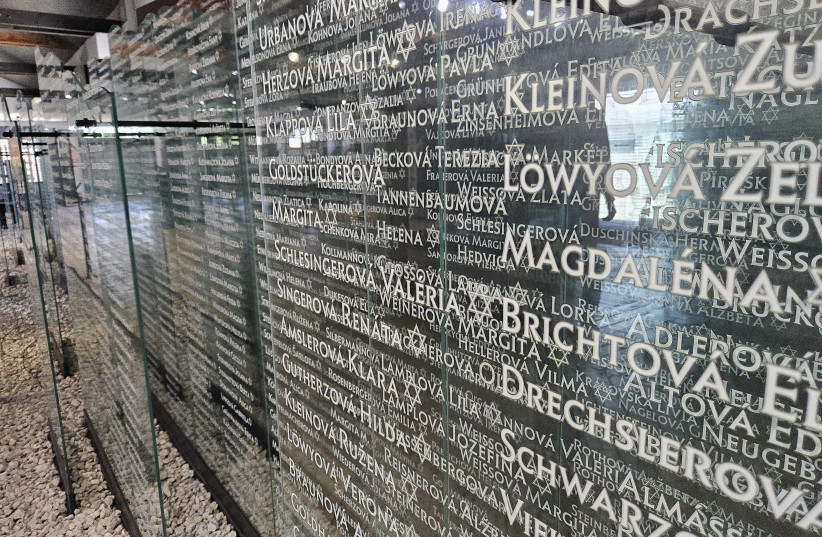Some 79 years after the genocide against global Jewry ended, there are 245,000 Jewish Holocaust survivors still alive as of August 2023, according to the Conference on Jewish Material Claims Against Germany in a report published on January 23 under the title: Global Demographic Report on Jewish Holocaust Survivors.
The survivors were identified through outreach efforts made by the Hardship Fund Supplemental Payments, which are made available to those recognized as survivors of the Holocaust by the Claims Conference’s and Germany’s criteria.
The definition of a “survivor” was made to include not only European Jews who were forced to live in work camps, concentration camps, or ghettos but also those who were forced to flee or live in hiding, which includes Jews who were persecuted in North Africa, that is, in Algeria, Libya, Morocco, and Tunisia.
The issue of who is a survivor remains contentious, as Israel recognizes Jews who lived in Iraq as eligible for certain benefits while the German government and Claims Conference do not. Therefore, the number of survivors is only reflective of the Claims Conference’s definition and may vary somewhat depending on criteria changes.
Gideon Taylor, president of the Claims Conference, said, “The data we have amassed not only tells us how many and where survivors are; it clearly indicates that most survivors are at a period of life where their need for care and services is growing. Now is the time to double down on our attention to this waning population. Now is when they need us the most.”
How old are the survivors now?
The survivors are in the age range of 77-100 years old, with the report including individuals who were in utero and born in 1946 within the statistics. The median age of survivors is 86.

Most of the survivors (75%) who are still alive were 3-12-year-old children in 1945
Children had the slimmest chance of survival, according to the report, with a total of 1.5 million having been killed by the Nazis. Many survived by hiding their Jewish identity, which created a unique type of trauma, according to the report.
Unmentioned in the report are the Jewish children taken in by the Church during the Holocaust who were never returned to the Jewish community. Brown University’s article, “The Vatican’s Role in the Finaly Children’s Kidnapping Case,” explicitly mentions two French Jewish boys, Robert and Gérald Finaly, who were held by a Catholic woman during the Holocaust for their safety.
Rejecting the murdered parents’ wishes, the woman refused to return the Finaly brothers to their living Jewish relatives after the war. Indeed, there are cases where survivors may not even know they were Jewish, having been adopted and raised with a different identity.
The majority of survivors are women (61%), which is not surprising, as women generally live longer than men, according to Harvard Health Publishing.

Financial support for survivors
Signifying a growing need for care expenditure, the report found that 20% of survivors are over the age of 90. Therefore, the Claims Conference anticipates a 40% growth in the number of individuals making grant fund requests. Since 2020, there has been an average of 28,000 new requests annually.
The increase in requests is reportedly due to the aging of the population and the impact of inflated costs of care. In addition, the report lists the emotional impact of Hamas’s October 7 attack, the Russia-Ukraine war, and the COVID-19 pandemic as reasons survivors may require additional funds.
The total funds allocated in 2023 exceeded previous records, with $812.7 million being paid out – an increase of nearly $100 million from 2022
Eighty-one percent of survivors had received at least one payment from the Claims Conference in 2023. An additional 9% were receiving payments from either Israel or Germany, thanks to negotiations made by the Claims Conference.
Where are the survivors living now?
Nearly half (47%) of survivors were born in the USSR; a further 22% were born in Eastern Europe, and 10% were originally from Western Europe. More than one in five survivors were born in North Africa. A small number, unrecognized in percentages, were born outside the above regions, such as Shanghai.
While Holocaust survivors are now spread across 90 different countries, 49% reside within Israel. The number in this report is less than the 147,199 survivors reported living in Israel by the Holocaust Survivors’ Rights Authority on Holocaust Remembrance Day in 2023, which could be due to Israel’s differing defining criteria.
A further 18% of survivors live in Western Europe, with half of them in France.
Matching the European continent, 18% of survivors reside in North America, with the majority (16%) living in the United States. Nearly 40% of survivors in the US live in New York.
Thirty-seven percent of survivors from the Soviet Union live in Israel; 24% reside in North America. Those who fled the Soviet Union are also more likely to live in poverty and in worse health, the report found.
Russia is currently home to 18,200 survivors, and Ukraine is home to 7,400.
Compensation for victims
Following negotiations between Germany and the Claims Conference on Jewish Material Claims Against Germany, the report found that 40% of survivors were receiving monthly payments from Germany as compensation for their trauma and lost years. An additional 62% have received at least one payment under the Hardship Fund Supplemental Program.
The report states, “No amount of compensation could ever make good the destruction of human life, communities, and culture,” although it does describe the funds as “a measure of justice.”
Germany has paid over $90 billion in compensatory funds. Other countries, such as Austria, have also provided compensation to survivors.
Greg Schneider, executive vice president of the Claims Conference, said, “The numbers in this report are interesting but it is also important to look past the numbers to see the individuals they represent. These are Jews who were born into a world that wanted to see them murdered. They endured the atrocities of the Holocaust in their youth and were forced to rebuild an entire life out of the ashes of the camps and ghettos that ended their families and communities. The data forces us to accept the reality that Holocaust survivors won’t be with us forever; indeed, we have already lost most survivors.”
Michael Berenbaum, distinguished professor of Jewish Studies at American Jewish University, said, “This clear and comprehensive report highlights important data analysis across many disparate compensation and social welfare programs, as only the Claims Conference can do. It also demonstrates that even as the number of survivors decreases day by day, the needs of those who are still alive only increase. At the same time, it illustrates that we have many countries with only a handful of these extraordinary individuals still gracing our world, underscoring the urgency of learning from their survival and resilience. This is it; this is our last chance to recognize them, to celebrate them, and to learn from them. We should all be asking ourselves what we are doing to make that happen before it is too late.”
The Conference on Jewish Material Claims Against Germany
FOUNDED IN 1951, the Claims Conference has represented survivors in their battle for justice. Regularly negotiating with Germany, it founded a number of compensation programs that provide direct payments to survivors globally, providing grants to over 300 social service agencies worldwide.
In addition to financial support, the Claims Conference ensures that survivors receive home care, food, medicine, transportation, and socialization.
Yad Vashem Chairman Dani Dayan stated, “I would like to express my heartfelt gratitude to the Claims Conference for compiling this crucial report about Holocaust survivors today. This demographic study is a warning to me, highlighting the current demographic state of Holocaust survivors globally. It underlines the urgency of our work to continue gathering and researching the testimonies and names of these remarkable individuals before the survivor generation disappears. May their presence continue to strengthen our resolve to shape a better future.”
